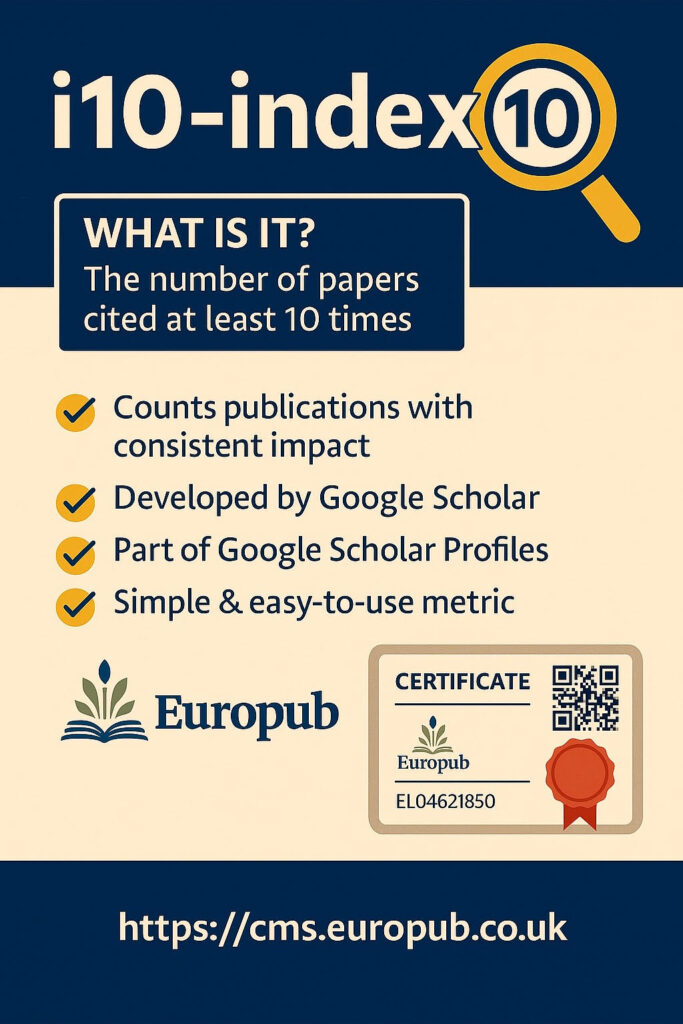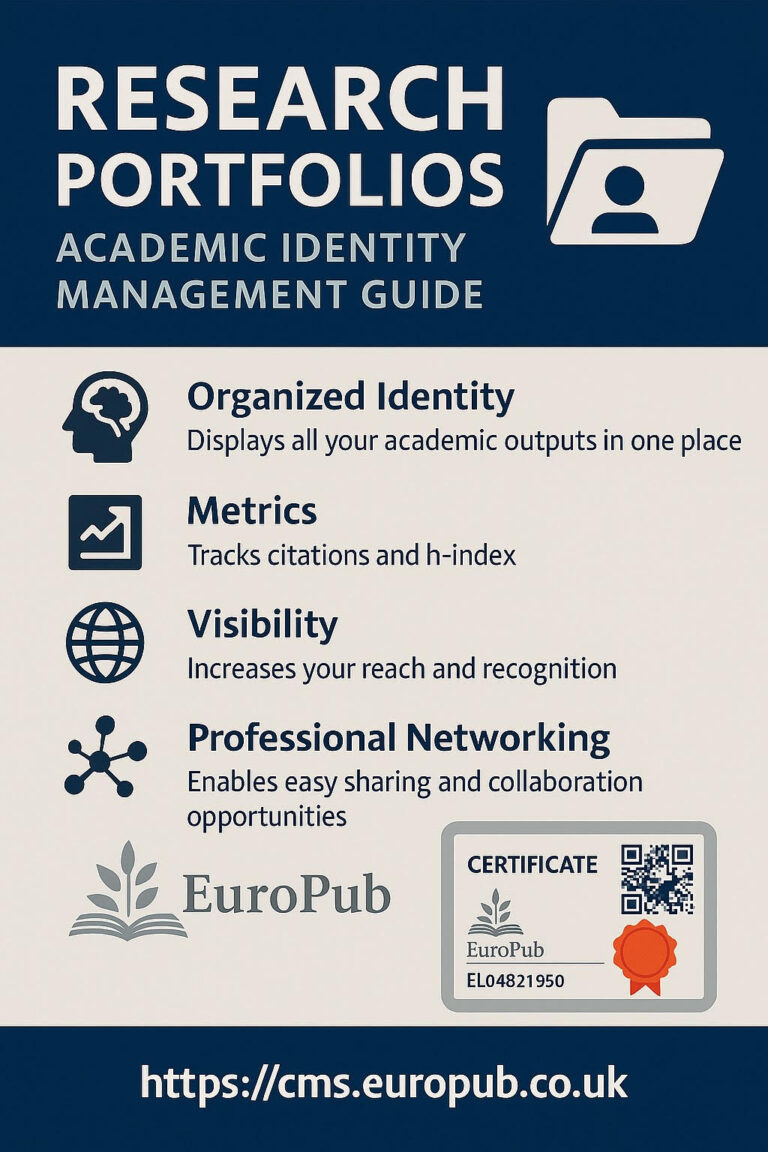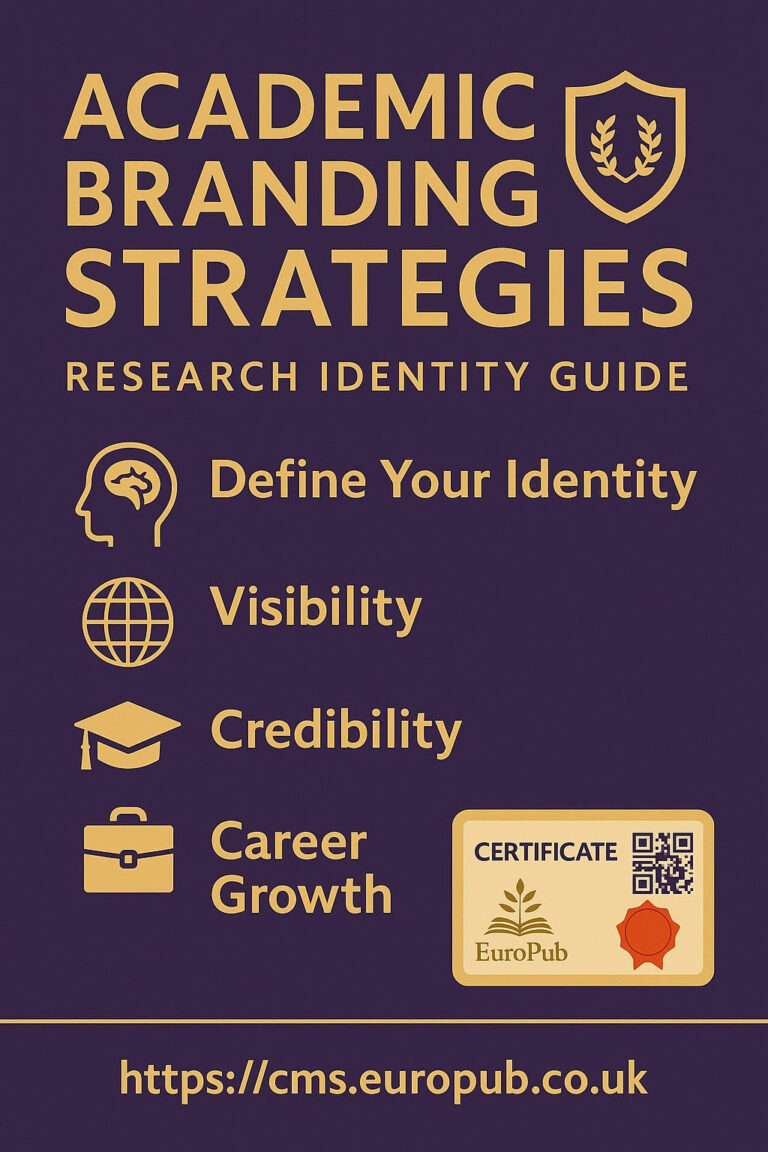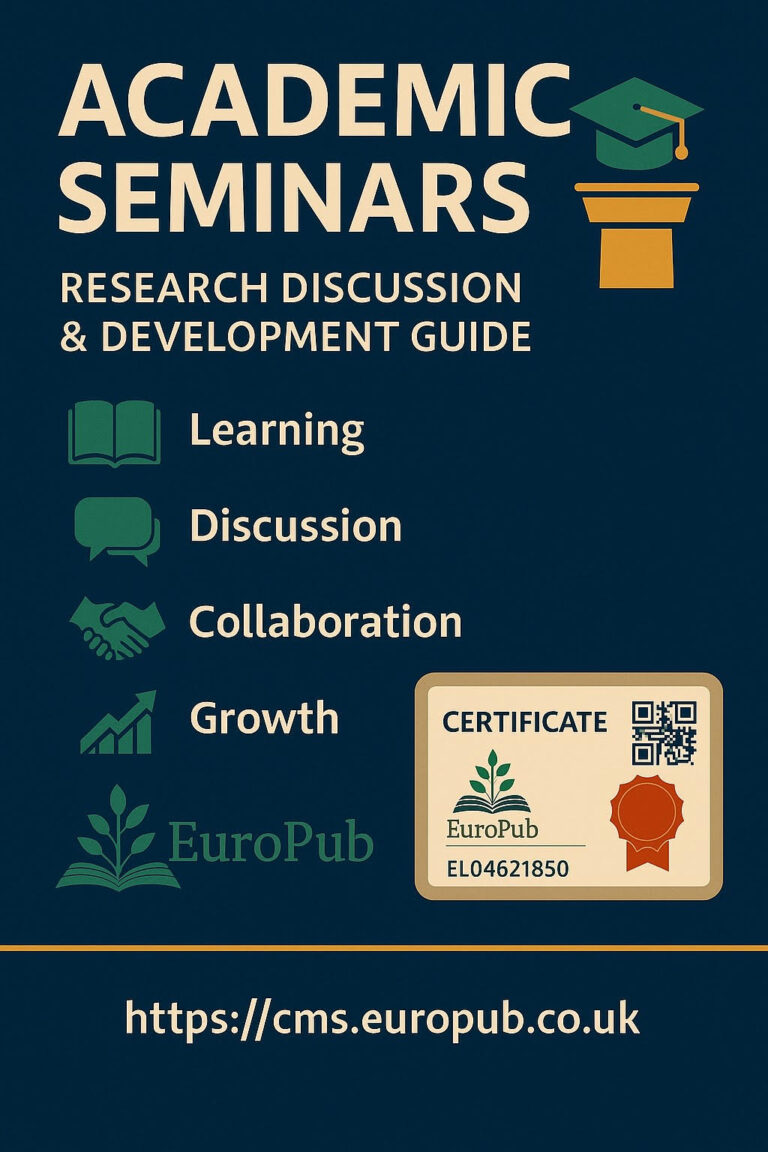
 What is the i10-index?
What is the i10-index?
The i10-index is a straightforward bibliometric indicator developed by Google Scholar that measures a researcher’s productivity based on the number of publications that have received at least 10 citations.
It is one of the simplest citation metrics available and is primarily used in Google Scholar Profiles to provide a quick overview of an author’s research visibility and influence.
 Example:
Example:
If an author has 15 papers, and 12 of them have been cited 10 times or more, the i10-index = 12.
 Formula
Formula
i10 = \text{Number of papers with ≥10 citations}
It’s a count-based index, meaning it reflects how many papers have achieved a minimum threshold of impact (10 citations).
 Where It Appears
Where It Appears
The i10-index is currently displayed only in Google Scholar Citations profiles and in some bibliometric dashboards.
It complements other metrics like:
- Total citations
- H-index
- i10-index (All time / Last 5 years)
 Why It Matters
Why It Matters
- Quick indicator of consistent research performance
- Easy to understand and calculate
- Reflects both quantity and baseline quality
- Used by universities, hiring committees, and funding panels as a supplemental indicator
 Advantages
Advantages
 Simplicity — easy to calculate and interpret
Simplicity — easy to calculate and interpret
 Transparent — based purely on citation counts
Transparent — based purely on citation counts
 Useful for comparing early-career researchers
Useful for comparing early-career researchers
 Updated automatically via Google Scholar
Updated automatically via Google Scholar
 Complements more complex indicators (H-index, g-index, etc.)
Complements more complex indicators (H-index, g-index, etc.)
 Limitations
Limitations
 Available only through Google Scholar
Available only through Google Scholar
 Does not weight highly cited papers
Does not weight highly cited papers
 Does not adjust for field differences or citation patterns
Does not adjust for field differences or citation patterns
 Can be inflated by self-citations
Can be inflated by self-citations
 Not recognized by Scopus or Web of Science
Not recognized by Scopus or Web of Science
 Typical Benchmarks (Approximate)
Typical Benchmarks (Approximate)
| Career Stage | Expected i10-index |
|---|---|
| Early-Career (PhD/Postdoc) | 3–10 |
| Mid-Career | 10–30 |
| Senior Researcher | 30–60+ |
| Top-Cited Scientist | 100+ |
 i10-index vs H-index
i10-index vs H-index
| Feature | i10-index | H-index |
|---|---|---|
| Definition | # of papers cited ≥10 times | Highest number of papers cited ≥h times |
| Complexity | Simple | Moderate |
| Database | Google Scholar | Google Scholar, Scopus, WoS |
| Focus | Productivity | Productivity + Impact |
| Interpretation | Broad overview | Balanced depth |
| Usefulness | Supplementary metric | Core metric |
 How to Check Your i10-index
How to Check Your i10-index
- Go to Google Scholar
- Sign in with your Google account
- Create or view your Google Scholar Profile
- Your i10-index will appear automatically under Citations → i10-index (All / 5 years)
You can also track your i10-index with:
- Publish or Perish Software (Harzing.com)
- Europub Research Dashboard — https://cms.europub.co.uk
- Google Scholar Profile Metrics Export
 Ethical Use of i10-index
Ethical Use of i10-index
 Avoid self-citation manipulation
Avoid self-citation manipulation
 Maintain an updated public profile
Maintain an updated public profile
 Ensure all indexed papers are genuine and peer-reviewed
Ensure all indexed papers are genuine and peer-reviewed
 Cross-verify with institutional or publisher records
Cross-verify with institutional or publisher records
 Follow responsible metrics guidelines (DORA, COPE)
Follow responsible metrics guidelines (DORA, COPE)
 FAQs (Frequently Asked Questions)
FAQs (Frequently Asked Questions)
Q1. Who developed the i10-index?
 Google Scholar introduced it in 2011.
Google Scholar introduced it in 2011.
Q2. Is i10-index peer-reviewed or validated by external bodies?
 No, it’s maintained solely by Google Scholar’s citation database.
No, it’s maintained solely by Google Scholar’s citation database.
Q3. Can I calculate it manually?
 Yes — count how many of your publications have ≥10 citations.
Yes — count how many of your publications have ≥10 citations.
Q4. Why does my i10-index differ from my colleague’s?
 Citation coverage, publication field, and profile updates differ by user.
Citation coverage, publication field, and profile updates differ by user.
Q5. Does the i10-index count books, theses, or conference papers?
 Yes, if they appear in Google Scholar and have ≥10 citations.
Yes, if they appear in Google Scholar and have ≥10 citations.
Q6. Can the i10-index decrease over time?
 No — it can only remain constant or increase as citations grow.
No — it can only remain constant or increase as citations grow.
Q7. Are self-citations included?
 Yes — Google Scholar counts self-citations unless filtered manually.
Yes — Google Scholar counts self-citations unless filtered manually.
Q8. Does Scopus or Web of Science include the i10-index?
 No, it is exclusive to Google Scholar.
No, it is exclusive to Google Scholar.
Q9. How can I improve my i10-index ethically?
 Publish high-quality, citable work
Publish high-quality, citable work
 Share your papers in repositories
Share your papers in repositories
 Engage in academic collaborations
Engage in academic collaborations
 Present findings at conferences
Present findings at conferences
 Promote your work responsibly online
Promote your work responsibly online
Q10. Is i10-index a good metric for early-career researchers?
 Yes, because it gives quick visibility even with a small number of papers.
Yes, because it gives quick visibility even with a small number of papers.
Q11. Can journals have an i10-index?
 Not formally, but citation count analysis per issue can simulate a similar metric.
Not formally, but citation count analysis per issue can simulate a similar metric.
Q12. Can institutions use the i10-index?
 It’s possible through cumulative aggregation, though not standard practice.
It’s possible through cumulative aggregation, though not standard practice.
Q13. What is a good i10-index in different fields?
| Field | Typical Range |
|---|---|
| Medicine / Biology | 20–40 |
| Engineering | 10–25 |
| Social Sciences | 5–20 |
| Arts / Humanities | 3–10 |
Q14. Does Europub calculate i10-index?
 Europub’s certificate dashboard integrates i10-index from Google Scholar APIs and displays it with verified EuroCode certificates.
Europub’s certificate dashboard integrates i10-index from Google Scholar APIs and displays it with verified EuroCode certificates.
 Visit https://cms.europub.co.uk
Visit https://cms.europub.co.uk
Q15. What is the difference between i10-index (All) and i10-index (Last 5 years)?
 “All” includes all-time citations; “Last 5 years” reflects recent impact trends.
“All” includes all-time citations; “Last 5 years” reflects recent impact trends.
 Useful Tools & Links
Useful Tools & Links
- Google Scholar Citations
- Publish or Perish Software
- Europub Citation Certificates
- Scopus Author Preview
- Web of Science ResearcherID
 Summary
Summary
| Category | Description |
|---|---|
| Metric Name | i10-index |
| Introduced By | Google Scholar |
| Definition | # of papers cited ≥10 times |
| Main Use | Quick productivity measure |
| Primary Source | Google Scholar |
| Related Metrics | H-index, G-index, i20-index |
| Ethical Note | Avoid self-citation or citation rings |





